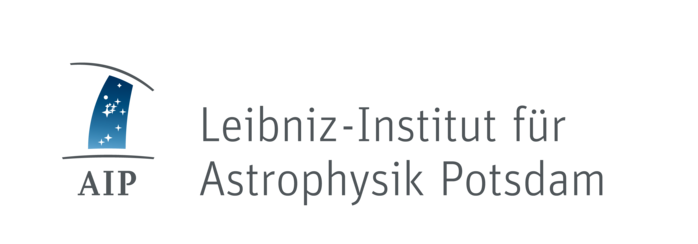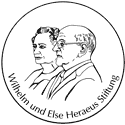Program
New: The Talk and Poster PDFs are now available on this page.
Monday, 01 June 2015
09:00 – 09:10 Cristina Chiappini: Welcome and opening remarks
09:10 – 09:40 Andrea Miglio: Basics of asteroseismology
09:40 – 10:10 Guy Davies: The oscillations of red giants – what information does the power spectrum contain?
10:10 – 10:40 Benoit Mosser: Seismic indices: a deep look inside evolved stars
10:40 – 11:00 Simon Campbell: Star Clusters, Supercomputing, and Asteroseismology
11:30 – 12:00 Karsten Brogaard: Testing asteroseismic scaling relations using eclipsing binaries
12:00 – 12:30 Rasmus Handberg: Peakbagging in the open cluster NGC 6819
12:30 – 12:40 Conference Photo (in front of the Physikzentrum)
14:30 – 15:00 Maurizio Salaris: Age-dating combining stellar models, asteroseismology and spectroscopy
15:00 – 15:20 Sydney Barnes: Ages for cool main sequence stars from stellar rotation
15:20 – 15:40 Emanuele Tognelli: Cumulative theoretical uncertainties in lithium depletion boundary age
15:40 – 16:00 Pier Giorgio Prada Moroni: Uncertainties in grid-based estimates of stellar ages
16:30 – 16:50 Victor Silva Aguirre: Age determination for dwarfs and giants from Asteroseismology
16:50 – 18:00 Poster Session I
Tuesday, 02 June 2015
09:00 – 09:30 Georges Meynet: Impact of stellar rotation in stellar models
09:30 – 10:00 Patrick Eggenberger: Models of rotating stars constrained by red giant asteroseismology
10:00 – 10:30 Carlos Allende Prieto: Automated pipelines for spectroscopic analysis
10:30 – 11:00 Hans-Günter Ludwig: Hydrodynamical model atmospheres vs. spectroscopy and seismology
11:30 – 11:50 Rana Ezzeddine: NLTE iron abundances in red giants with asteroseismic gravities
11:50 – 12:10 Ruth Peterson: Effective temperatures for K giants and dwarfs from ugriz photometry
12:10 – 12:30 Paula Jofré Pfeil: Gaia benchmark stars: looking for the representatives of Milky Way stars
14:30 – 15:00 Steve Majewski: APOGEE and its successor, APOGEE-2
15:00 – 15:30 Leo Girardi: Milky Way stellar populations with TRILEGAL
15:30 – 16:00 Sanjib Sharma: Modeling the Milky Way and the Kepler field using Galaxia
16:30 – 16:50 Andreas Just: Dynamical and chemical evolution of the thin disc
16:50 – 17:20 Annie Robin: Clues on the Milky Way thick disc formation from population synthesis simulations
17:20 – 18:30 Discussion Uncertainties:
Spectroscopic Pipelines / Stellar Models / Seismic Pipelines
Leaders: Verne Smith, Bertrand Plez and Yvonne Elsworth
18:30 – 18:45 Ernst Dreisigacker: About the Wilhelm and Else Heraeus Foundation
Wednesday, 03 June 2015
09:00 – 09:30 Luca Casagrande: The vertical age structure of the Milky Way disc
09:30 – 10:00 Joss Bland-Hawthorn: The GALAH survey: reconstructing the ancient Galaxy
10:00 – 10:30 Matthias Steinmetz: RAVE as a preview to what to expect from the Gaia RVS
10:30 – 11:00 Carla Cacciari: Gaia’s contribution to reconstructing the history of the Milky Way
11:30 – 11:50 Georges Kordopatis: Chemo-dynamics of the Milky Way’s discs with RAVE and Gaia-ESO
11:50 – 12:10 Corrado Boeche: SP_Ace: A new code to estimate stellar parameters and chemical abundances
12:10 – 12:30 Gabriele Pezzulli: Accretion, radial flows and abundance gradients in spiral galaxies
14:30 – 15:00 Jennifer Johnson: Galactic Stellar Populations with APOGEE and Kepler
15:00 – 15:20 Katia Cunha: Chemical abundance gradients from open clusters using APOGEE data
Free afternoon
Hiking tour and Wine Tasting
Thursday, 04 June 2015
09:00 – 09:30 Dennis Stello: The K2 Galactic Archaeology Program
09:30 – 10:00 Marica Valentini: The CoRoT-GES Collaboration: joint action of seismology and spectroscopy
10:00 – 10:30 Friedrich Anders: Galactic Archaeology with CoRoT and APOGEE
10:30 – 10:50 Thaise Rodrigues: Distances and extinctions for giants observed by Kepler and APOGEE
10:50 – 11:10 Marie Martig: Young alpha-enriched stars in the solar neighbourhood
11:30 – 12:00 Norbert Christlieb: The ages of metal-poor stars
12:00 – 12:20 Stefania Salvadori: Carbon-enhanced stars in the Milky Way and dwarf galaxies
12:20 – 12:40 Ortwin Gerhard: The structure of the Milky Way’s bar outside the bulge
14:30 – 15:00 James Binney: Extended distribution functions for our galaxy
15:00 – 15:30 Ivan Minchev: Milky Way Chemo-dynamics in the era of Gaia
15:30 – 15:50 Benoit Famaey: Dynamical constraints on non-axisymmetries in the galaxy
16:20 – 16:40 Nikos Prantzos: Radial migration in galactic disks and its impact on MW chemical evolution
16:40 – 17:00 Robert Grand: Radial migration in Milky Way sized galaxy simulations
17:00 – 17:50 Discussion MW Models and how to best test them with Galactic Archaeology
Leader: Daisuke Kawata
17:50 – 18:50 Poster Session II
Friday, 05 June 2015
09:00 – 09:30 Heike Rauer: The PLATO 2.0 Mission
09:30 – 10:00 Roelof de Jong: 4MOST: 4-metre Multi-Object Spectroscopic Telescope
10:00 – 12:00 Discussion Summary and Future Plans
Follow-up of seismic targets / How we organize ourselves? / Where are efforts/manpower needed now?
Leaders: Arlette Noels & Josefina Montalban
Posters:
Poster prizes:
- Nadege Lagarde: Models of red giants in the CoRoT asteroseismology fields combining asteroseismic and spectroscopic constraints – The open cluster NGC 6633 and field stars
- Noelia Jimenez: Progenitors of Supernovae Type Ia in SPH galaxy simulations: Can we constrain the progenitor’s identity by the study of chemical patterns and scaling relations of the host galaxy?
- Alessandro Mott: Lithium abundance in spectroscopic surveys: application of 3D stellar model atmospheres
Borja Anguiano: GALAH + CoRoT: where high-resolution spectroscopy meet asteroseismology
Borja Anguiano: The age-velocity relation in the solar neighbourhood as revealed by a sample of hydrogen-rich SDSS white dwarfs
Olivier Bienaymé: Mapping the Galactic gravitational potential with RAVE data
Danijela Birko: Single lined spectroscopic binary stars in the RAVE survey
Payel Das: A chemodynamical model of the Milky Way stellar halo
Eric Depagne: No breakdown of the radiatively-driven wind theory in low-metallicity environments
Andrea Kunder: Bulge RR Lyrae Radial Velocity Assay
Maider Miranda: Origin of the Metallicity Distribution in the Thick Disc
Stefano Pasetto: Padua Galaxy model in preparation for Gaia: asymmetries and action space in star count modelling techniques
Jan Rybizki: The alchemy of tracing the prevalence of massive stars
Edita Stonkute: Stellar multiplicity in high-resolution spectroscopic surveys
The timetable of the program (as of May 29th) can be downloaded here.



